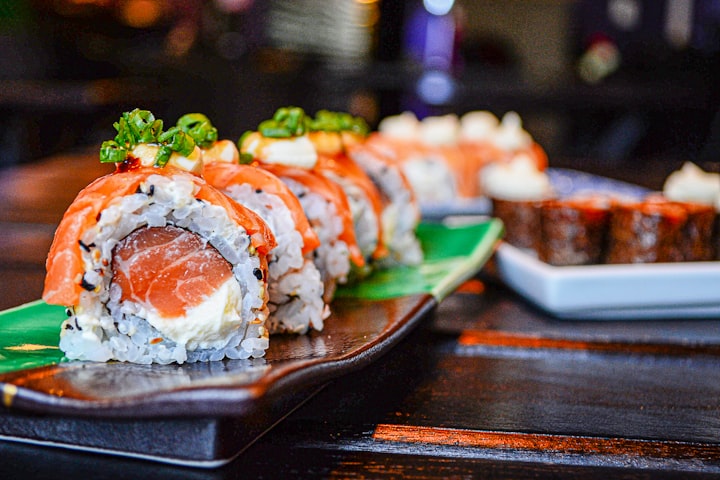
Restaurant menus are like blurbs for real estate properties. Colourful, descriptive, and mostly unintelligible language used with flourish to sell mutton dressed up as lamb. Heavy on the adjectives, a particularly pretentious and pompous menu might boast "slow roasted tenderloin of wild African boar, hand glazed with New Zealand Manuka honey, nestling on a bed of Moroccan couscous and finished with an Indonesian green pepper sauce." Our salivary glands should be full to overflowing with expectation at this magnificent dish, made with elements from no less than four different global locations.
If you’ve ever been in a posh restaurant with three chef’s hats next to its name, you’ll most likely have had mixed feelings, ranging from mild disappointment at portion sizes, to sheer terror when the bill comes.
If you’re a freelance writer like me, you have no business being in that restaurant in the first place, unless you’re moonlighting as a kitchen hand. The restaurants that you normally frequent don’t have hats. In fact, they don’t even have chefs who wear hats!
So you’re seated as comfortably as you can be, considering that your back is jammed hard against the person behind you (real estate is at a premium in these places…every inch of floor space counts). Your taste buds are frolicking frantically with anticipation, completely unaware that your dining experience will most likely leave you—and your wallet—with a bad case of bellyache by the time you’ve finished.
Studying the rich prose, stuffed with flambéed adjectives, carefully sautéed with creamy adverbs, your imagination starts to slobber. You read at length about how lovingly and painstakingly the food was prepared and how fresh the ingredients are. This is good to know because freshness is not something you can take for granted, particularly in the restaurants you usually eat at.
Excitement dims to mild confusion as you study the culinary lexis. Food is jerked, caramelized, deglazed, brined, steeped, dipped, brushed, marinated and otherwise anointed. It is then nestled, rested, stacked, balanced, carefully placed, and dressed to impress.
Satisfied that your food will be treated with the care and consideration of Cleopatra’s coronation, you decide on an entrée. Even though you can’t find an entrée section, something in the back of your mind reminds you that another word for entrée is starter.
Your ravenous brain goes into overdrive as you try to decide whether your starter should be grilled, broiled, roasted, slow cooked, twice cooked, or poached. It probably doesn’t matter because it will all be done “to perfection.” You scan the menu, however, looking for something “fried” to perfection but the word fried has been carefully avoided.
So you decide that “pan seared” is close enough. Then your eagle eye spots the word carpaccio. The menu says the meat is aged prime Japanese Kobe beef, and while you’re not sure what cooking process is used in carpaccio-ing something, you order it anyway. The accompanying truffle oil and Parmigiano Reggiano practically sells the dish anyway. That’s the starter out of the way.
Time to deliberate over which tantalizing main course to order. You’ve decided to be adventurous, but want to keep your fat intake to a minimum, so your eyes skim over the beef, lamb and fish dishes and rest curiously on the Two Style Duck… Confit Maryland & Twice Cooked Breast, served with Braised Cavalo Nero, Sour Cherries & Game Jus.
The description assures you that it is the dish by which most accolades are awarded to this fine dining establishment, and duck is poultry, so therefore it must be low fat, right? So without knowing what a confit, a cavalo nero, or game jus is, you lash out and order it, despite the juicy price tag. The wait-person inquires as to whether you would like a side of pont neuf potatoes. Not wishing to appear ignorant, you nod enthusiastically... even though you would have settled for chips.
The menu goes to great lengths to assure you that all vegetables are “garden vegetables,” which prompts you to wonder if there is another place from which to obtain them. You’re happy to see that cabbage, your most hated vegetable, is not in this garden’s medley.
The dessert menu looks somewhat more familiar, with such beloved old favorites as Sticky Date Pudding. But, still in an adventurous mood, and on an almost orgasmically descriptive recommendation from the wait-person, you decide that the pomegranate clafouti with maple cream anglaise will do just fine.
Glowing with satisfaction, you swirl, sniff, then sip your glass of Beaujolais, happily resigned to the fact that sometimes you just have to suffer for your art. Sure, your budget will be stretched to breaking point but you just know that this meal will be one to remember.
As the wait-person heads towards the kitchen with your order, you realize two things. One… you’re fervently hoping that the review you’ll write will be well received and you will henceforth become a sought-after food critic. And two… you forgot to tell them you want the carpaccio beef well done…
GLOSSARY:
Carpaccio: A dish of beef, veal, venison, or tuna—served raw.
Confit: A piece of meat (especially a duck) cooked slowly in its own fat
Cavalo Nero: Tuscan cabbage
Pont Neuf Potatoes: Thick cut chips
Pomegranate: Suggested to be the “fruit of knowledge” eaten by Adam and Eve.
About the Creator
Dora Bona
I'm a professional freelance writer with a passion for travel.






Comments
There are no comments for this story
Be the first to respond and start the conversation.